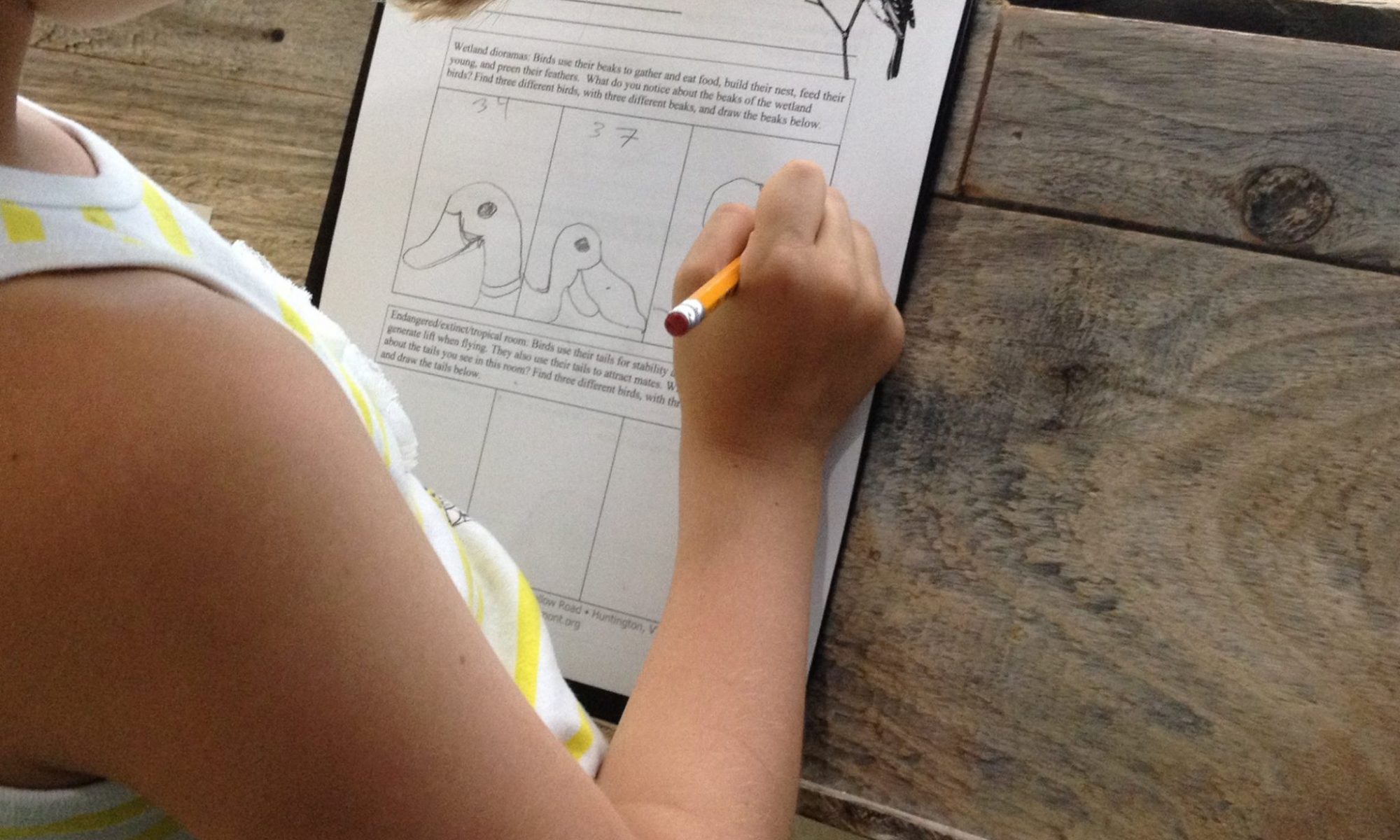What School Groups Often Focus On
Adaptations
Birds are a special type of being. Although other creatures can fly; only birds have feathers. Birds have many special adaptations for flight. Birds fit into many ecological niches, from high forests to open farms to wetlands and shorelines. Their food choices vary at least as much as ours do: it would be impossible for a hummingbird to gobble up a mouse, and it would be just as impossible for a hawk to slurp up some nectar from a flower. Using biologically accurate carvings, discover how the structure of a bird’s body and its behavior fit it to its niche in the environment.
Habitats
Some birds prefer conifers, some open meadows and others Lake Champlain. By studying the bird’s preferred nesting habitat, students can see the different types of habitats needed to sustain our diverse population of birds. This introduces students to other topics such as the need for habitat diversity, the importance of land protection, or the ways in which Vermonters’ changing land use habits has affected both which birds and how many are where in Vermont.
Migration
Migration occurs when birds travel repeatedly and cyclically, often great distances, in order to survive. Using the carvings and the corresponding range maps, students can learn where Vermont’s summer birds go in the winter and where the winter birds spend their summers. This leads directly to studies in geography, navigation, and habitat, as well as to biology concepts such as energy use and storage in a body, survival strategies, or generalist/specialist adaptations.
Bird Identification
By studying the bird carvings or looking at live birds at our bird feeders, students can practice observation and identification skills. Novice birders can look for differences in size, color, and preferred location. More advanced birders can look for ID marks such as eye rings and wing bars, and preferred foods and perches. They may relate these to habitat requirements, protection and camouflage against predation, and breeding success (or not).
Nesting
Birds build their nests in all kinds of places. Some nest high in trees while others nest on the ground. Birds also use a variety of nesting materials to build their nests, including sticks, mud, stones, grass, spider webs, and even snake skins. See how different nesting styles reflect birds’ ingenuity at using the materials provided by their environment for protection of their young. Expand this into concepts of bird growth and development from egg to adult, competition for resources, bird reproduction and parenting strategies, variation in nests between species, and variation in nests between individuals within species. What nesting behaviors are learned and which are instinctive?

